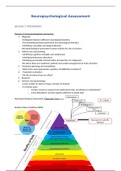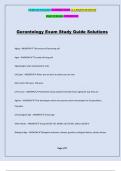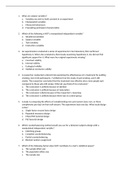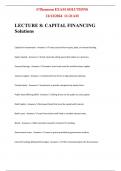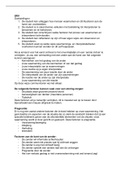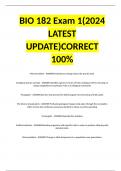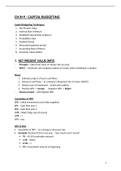Lecture 1 Introduction
Purpose of neuropsychological assessment:
1. Diagnosis
- Distinguish between different neurological disorders
- Discriminating between psychiatric and neurological disorders
- Identifying a possible neurological disorder
Neuropsychological assessment cannot localize the site of a lesion!
2. Patient care and planning
- Identifying cognitive strengths and weaknesses
- Identifying behavioral alterations
- Identifying personality characteristics (Irrespective of a diagnosis)
The above three are needed for optimal and careful management of many disorders
3. Treatment planning and remediation
- What is the most appropriate cognitive rehabilitation treatment?
4. Treatment evaluation
- Did the treatment have an effect?
5. Research
6. Forensic neuropsychology
- In the context of claims of injury and loss of function
- In criminal cases
o Is there reason to suspect brain dysfunction that contributes to misbehavior?
o Is the defendant’s mental capacity sufficient to stand trial?
Neuropsychological assessment: Diagnostic Cycle > > >
Evidence Bases Medicine (EBM)
,Why Hypotheses?
If you do not formulate hypotheses and go through the diagnostic cycle you will easily make
interpretation errors.
Interpretation errors:
- The tendency to rely strongly on some results and to disregard others
- Disregarding the base rate of disorders
o A neuropsychologist who works a lot with patients with Alzheimer’s disease will
have the tendency to diagnose Alzheimer’s disease more often
- Confirmation bias
o Looking for results that support the hypotheses
- Thinking that subjective complaints are objective disorders
Neuropsychological Assessment: Two Classical Approaches
Psychometric approach; Reitan-Halstead Testbattery
- Standardized assessment and scoring
- Uses normative data and cut-off scores per test and for the total test performance
- Quantitative test approach
- Not based on theories about the brain
- Category Test (Does the picture remind you of a 1, 2, 3 or 4?)
- Tactual Performance Test (Patient is blind-folded and has to place the blocks in their
appropriate space with the dominant hand)
- Speech-Sounds Perception Test (Patient has the underline the syllable he hears)
- Trail Making Test
- For each subtest: Does the patient score above the cut-off?
o Calculate Impairment Index:
- A-theorethical
- Fixed test battery
- Only focuses on ‘abilities’ and not on ‘dysfunctions’
o Impaired performance can have several possible causes
o No insight into the nature of the problem
o Gives no direction for rehabilitation
Behavioral Neurological approach: Luria
- After second world war: A large number of patients with brain injury
- Developed test battery based on his view / theory of the brain:
o Attention – Regulated by the brain stem
, o Perception – Posterior part of the brain
Primary (image)
Secondary (interpretation)
Tertiary (cross-modal integration)
o Organization and planning – Anterior part of
the brain
- Simple tasks
o Goal: to provoke symptoms
- Motor functions
- Higher order visual functions
- No empirical testing of his theory
- No normative data
- No standardization
- Based on observation
- Flexible test battery – adjusted to the individual patient
- Qualitative assessment
- Gives direction to rehabilitation
Criticism on Luria:
- Theory is strongly focused on
the left hemisphere.
- No insight into the severity of disorders
- No standardization, normative data or data about the reliability and validity of the tests
Current Situation: Differential diagnostic thinking
- Listen to complaints of patients in an unjudgmental manner
- Try to cluster syndromes, symptoms and impairments
- Be aware of halo-effect: Assuming that a patient has certain complaints or characteristics
which in reality are not present
Neuropsychological Assessment: Focused on Different Domains
- Intelligence Medical history - Perception
- Orientation - Motor skills
- Attention Anamnesis - Memory ((non)-verbal)
- Speed of information processing - Language
- Executive functions Hetero anamnesis - Social cognition
o Planning - Mood
o Cognitive flexibility Observation - Personality

